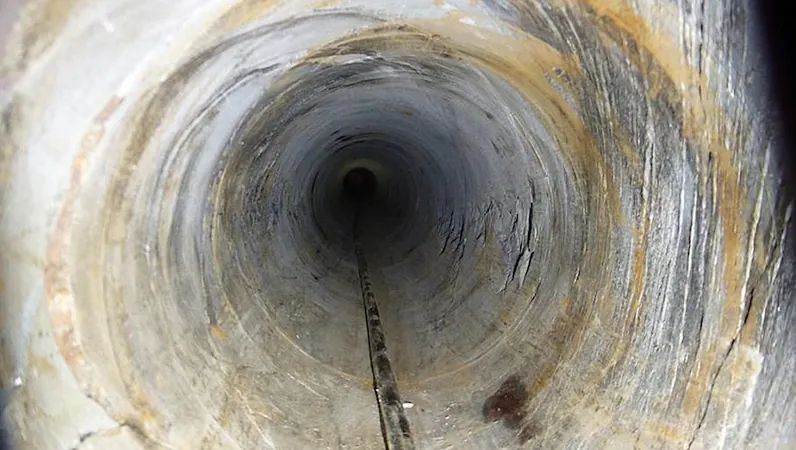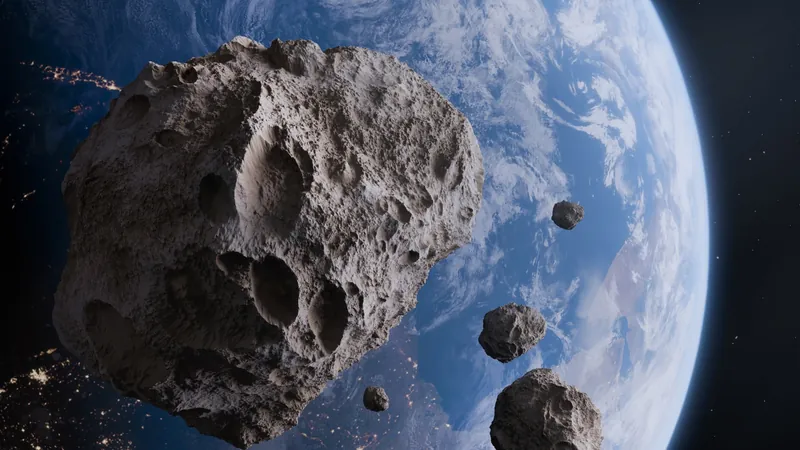
Unlocking the Secrets of Deep Subsurface Microbiology: Groundbreaking Calorimetric Discoveries!
2025-01-18
Author: John Tan
Introduction
Microbial life in the deep continental subsurface presents one of the most intriguing challenges in modern science. Ostensibly hidden in the Earth's depths, these microorganisms boast low cell densities and perplexing metabolic pathways, making them elusive study subjects. However, a recent study has shed light on their activity, potentially revolutionizing our understanding of life beneath the surface.
Research Methodology
Researchers conducted a meticulous sampling operation from six boreholes at the Sanford Underground Research Facility (SURF)—a historic site once bustling with gold mining—stretching from depths of 244 m to a staggering 1,478 m beneath the ground in South Dakota, USA. They utilized advanced nanocalorimetry to measure heat production in microbial samples as an indicator of metabolic activity.
Key Findings
The findings were startling: most of the unamended groundwater samples showed minimal heat flow, indicating that these microbial communities had exceptionally low metabolic activity. However, in a surprising twist, the borehole situated at 1,478 m (DeMMO 6) showed a significant heat signal. This was catalyzed by adding various electron donors, acceptors, and amino acids to these samples, signaling an opportunity to stimulate microbial growth and activity.
Unexpected Results
In a fascinating development, the addition of formate—a simple organic compound—yielded a remarkable surge of over 500 nW in heat flow during the first 100 hours of incubation. Meanwhile, combinations of nitrate and acetate also triggered substantial metabolic responses. Most impressively, the introduction of casamino acids led to an astounding increase in microbial cell density, exceeding three orders of magnitude.
Implications for Subsurface Microbiology
The findings suggest that Hydrogenophaga, a type of bacteria, thrived particularly well in nutrient-rich conditions provided by amino acids, demonstrating that even extreme and isolated habitats can support vibrant microbial communities. This response corroborates prior genomic studies indicating a high potential for amino acid metabolism in subsurface environments, laying the foundation for future explorations into astrobiological possibilities.
Funding and Collaboration
This remarkable research was made possible through funding from prestigious organizations like NASA and the National Science Foundation, underscoring the importance of interdisciplinary collaboration in uncovering the mysteries of microbiology.
Conclusion
As we expand our exploration into the depths of our planet—and beyond—these discoveries fuel exciting discussions about the resilience of life in extreme conditions, potentially guiding our search for extraterrestrial life forms. Stay tuned as we delve deeper into the astonishing world of subsurface microbiology, where each finding could hold the key to understanding life beyond Earth!


 Brasil (PT)
Brasil (PT)
 Canada (EN)
Canada (EN)
 Chile (ES)
Chile (ES)
 Česko (CS)
Česko (CS)
 대한민국 (KO)
대한민국 (KO)
 España (ES)
España (ES)
 France (FR)
France (FR)
 Hong Kong (EN)
Hong Kong (EN)
 Italia (IT)
Italia (IT)
 日本 (JA)
日本 (JA)
 Magyarország (HU)
Magyarország (HU)
 Norge (NO)
Norge (NO)
 Polska (PL)
Polska (PL)
 Schweiz (DE)
Schweiz (DE)
 Singapore (EN)
Singapore (EN)
 Sverige (SV)
Sverige (SV)
 Suomi (FI)
Suomi (FI)
 Türkiye (TR)
Türkiye (TR)
 الإمارات العربية المتحدة (AR)
الإمارات العربية المتحدة (AR)